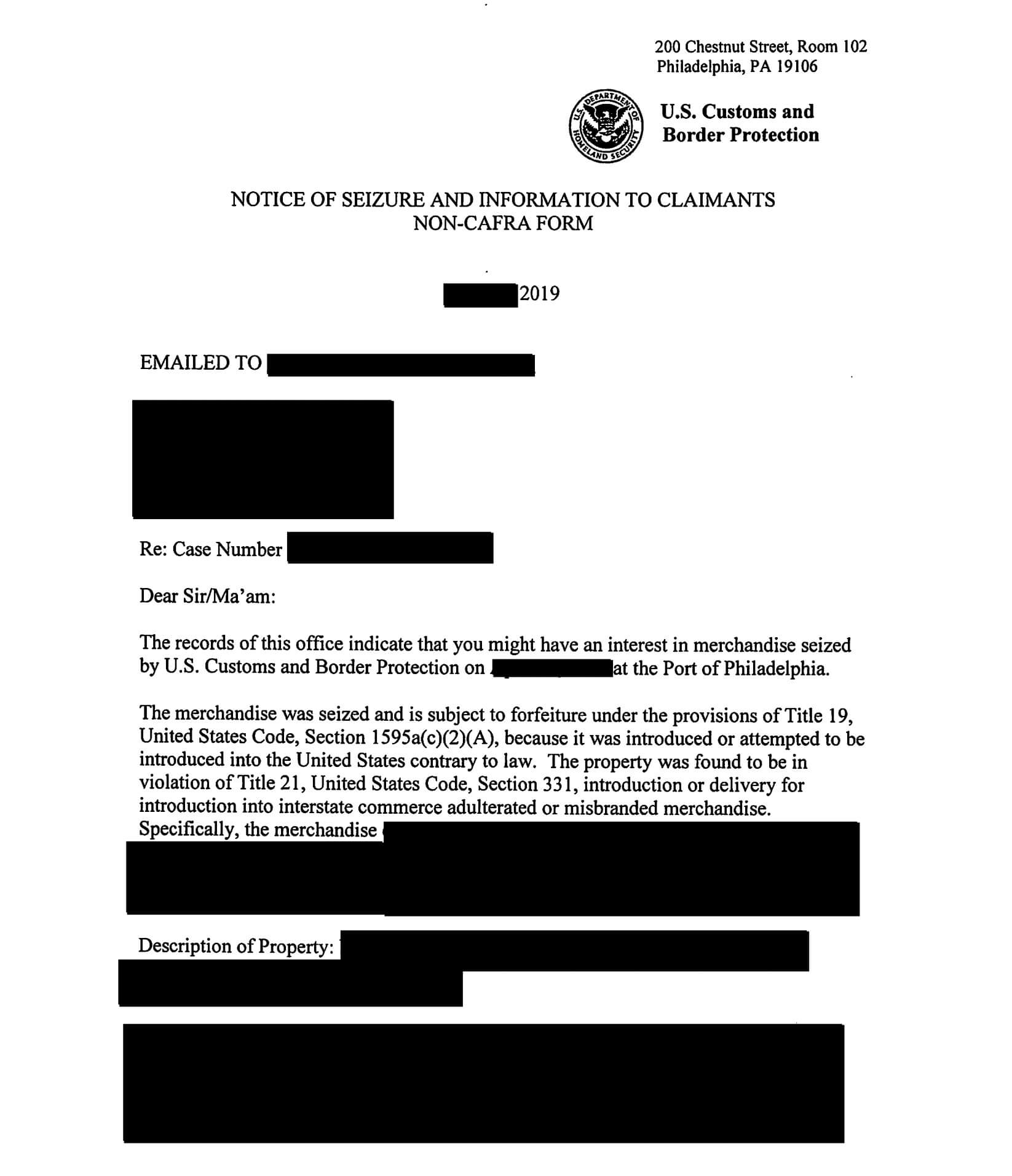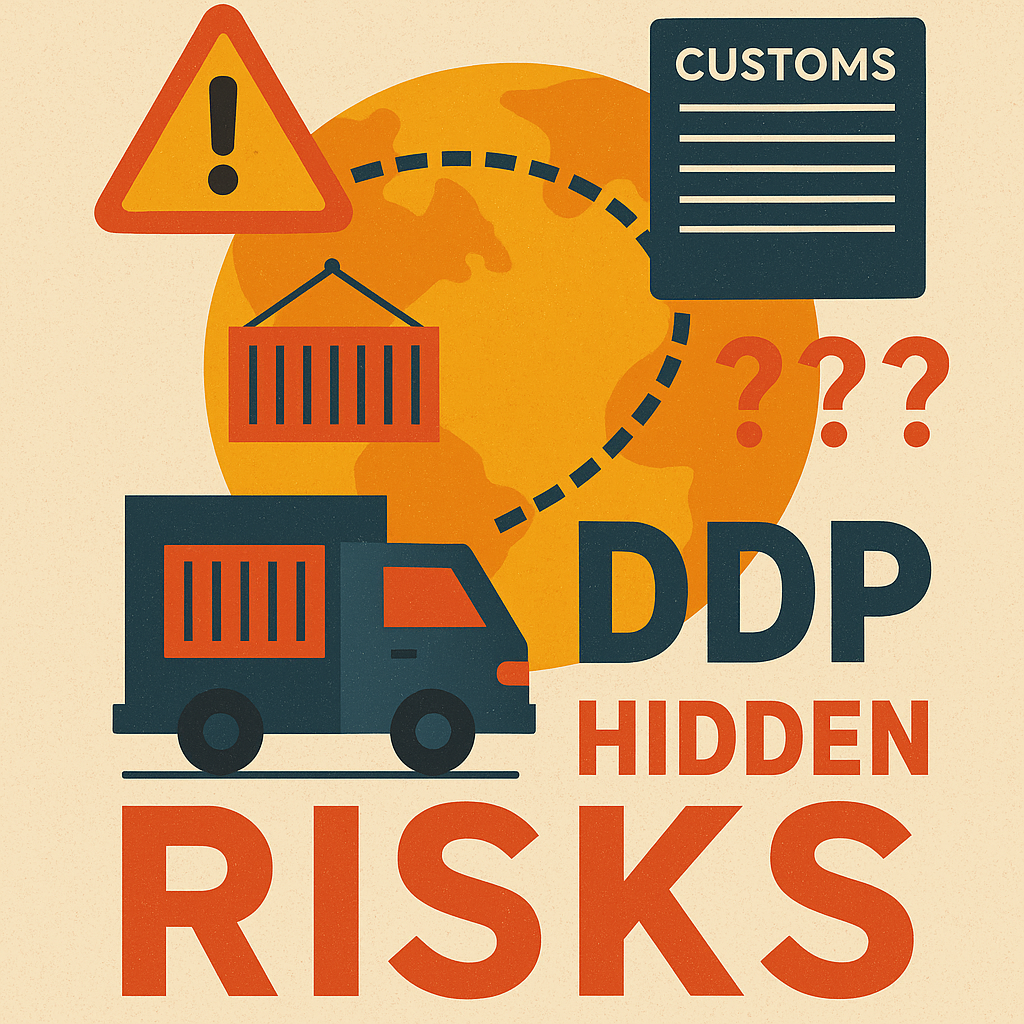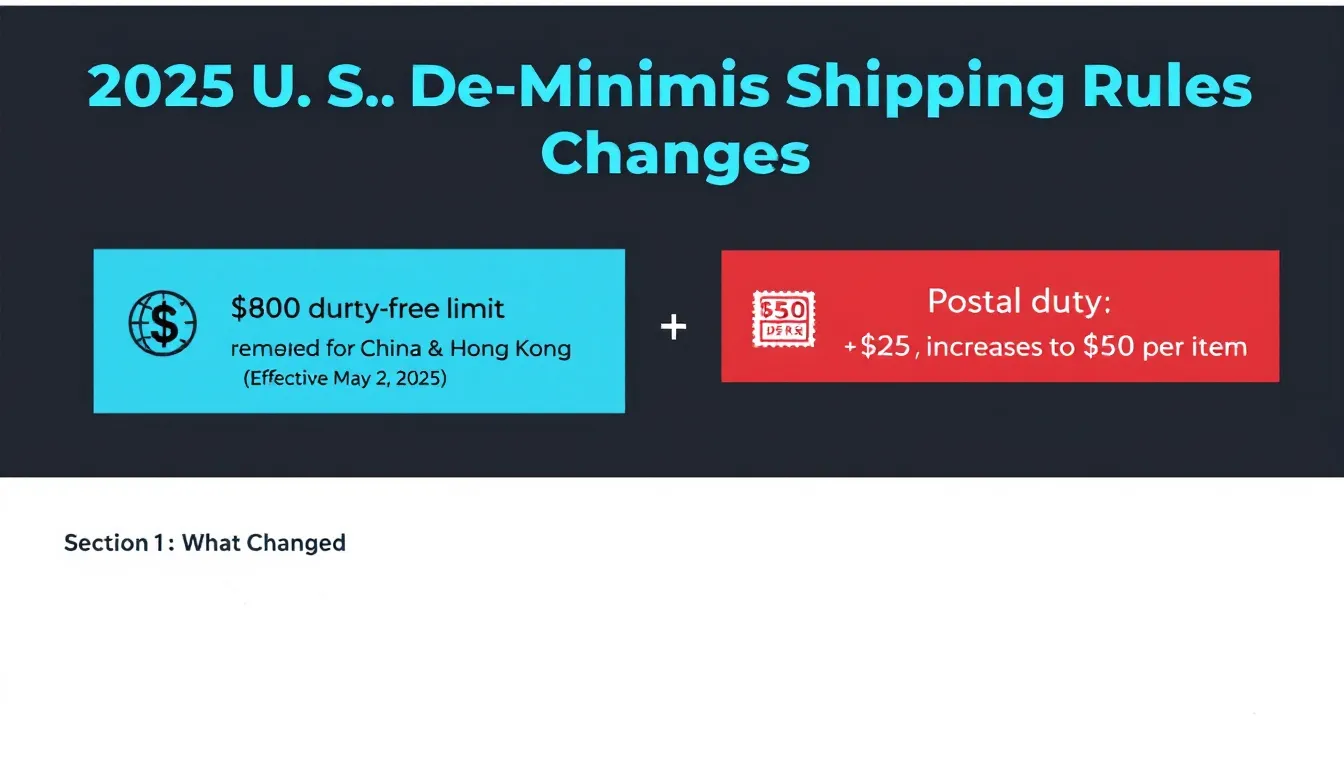What does receiving a “what is a customs notice of seizure” mean for you? This urgent communication from US Customs and Border Protection indicates that your goods have been seized due to suspected customs violations. You’ve got a narrow window of time to act and potentially reverse the seizure. In this article, we outline what the notice includes and the critical actions to take without delay.
Key Takeaways
A Customs Notice of Seizure is a formal CBP document signaling the confiscation of goods due to potential customs violations, and initiates a 30-day period during which the interested party can respond to prevent permanent forfeiture.
There are multiple pathways to respond to a seizure notice including filing a petition, offering a compromise, surrendering the goods, or seeking judicial intervention, each with strict timeframes and potential costs associated with them.
Ignoring a notice of seizure leads to automatic forfeiture and loss of goods with no compensation, hence timely legal advice and ensuring trade compliance are critical for prevention and optimal response to customs detentions and seizures.
Understanding the Customs Notice of Seizure

Customs and Border Protection (CBP) issues a Notice of Seizure to inform interested parties about the confiscation of merchandise. This notice serves as an important alert indicating potential violations of customs regulations, signaling that there may be problems with the importation process.
Included with this notice are:
The case number for Fines, Penalties, and Forfeitures (FP&F)
Contact details for the paralegal assigned to your case
A deadline set at 30 days from receipt to submit a ‘Petition’
As soon as you receive the seizure notice from CBP, time becomes critical. You must act promptly within these 30 days if you intend to reclaim your goods before they’re lost permanently due to enforcement actions taken under customs laws.
The Significance of Receiving a Seizure Notice
A seizure notice is not merely a routine piece of paper. It’s an official declaration that your control over the merchandise has been halted, commencing the procedure to confiscate property. In this tug-of-war scenario, where what you’ve worked for hangs in the balance and can be taken away through seizure, the seizure letter acts as an authoritative notification triggering this process.
Upon receiving such notice as a proprietor, you are entitled to:
A comprehensive explanation regarding why your goods were seized and precise citations of customs regulations or other laws justifying said action
Information on potential fines or penalties tied to the transgression
Guidance on options at your disposal along with actions necessary for responding to this predicament
The written notice functions like a navigational aid designed to assist you in maneuvering through the intricate web spun by customs statutes and federal legislation so that you might successfully recover possession of your property.
Legal Grounds for Property Seizure
The core of the seizure process is grounded in the power granted to CBP, which allows them to confiscate goods or money if they suspect any infractions against customs laws and guidelines. Essentially, should your merchandise be believed to infringe upon these customs regulations, CBP is empowered to conduct seizures.
Once a seizure has occurred, the confiscated items are taken to a bonded warehouse where they remain pending resolution of related legal issues. Even cash can be seized by CBP prior to an internal flight within the United States if there’s suspicion it may be tied to illegal activities contrary to Title 18 of the U.S. Code, Section 981. This underlines how meticulous homeland security investigations are when enforcing adherence to customs regulations and ensuring that violations do not go unchecked during their pursuit for lawfulness in cross-border activities.
Pathways to Addressing a Seizure Notice

Upon receiving a seizure notice, various pathways are presented in the Election of Proceedings Form. This document must be sent back to the FP&F office promptly as it marks a critical juncture at which you’ll need to determine your course of action.
Dealing with a seizure notice can take multiple forms.
Submitting a petition as a reaction to the seizure
Presenting an offer for compromise
Relinquishing ownership of the seized goods voluntarily
Pursuing legal redress
Think of this scenario like navigating through an interactive narrative where your choices will shape what happens with your seized property. But bear in mind, swift action is crucial — any claim related to the items must be lodged within 35 days and any petition filed with intent to quash forfeiture proceedings needs submission within 30 days from when you received the notice time isn’t on your side here. Every moment matters.
The Petition: Challenging Seizure Through Administrative Forfeiture
Submitting a petition in response to a notice of seizure acts as an essential measure to challenge or seek leniency concerning the action taken under customs laws. It’s often the most expedient and economical strategy for halting forfeiture procedures, comparable to making a last-ditch effort in sports to reclaim possession of your assets.
To properly lodge a petition, it entails more than merely drafting a grievance—it necessitates compiling specific paperwork that includes a sworn statement describing both the seized goods and alleged infractions, which must be directed to the designated office of the agency. This process is akin to assembling thorough legal files where precision is critical.
Time plays an instrumental role: one must file petitions seeking relief from seizures within 30 days following receipt of the notice regarding confiscation. Failure to do so can lead straight into forfeiture. Once you’ve filed your plea, there are several potential resolutions including remission or mitigation outcomes—or perhaps nullification—of such claims against your property. If not satisfied with initial judgments rendered by authorities on these matters relating specifically to items confiscated through enforcement actions (seizures) instigated via custom regulations, supplemental appeals may also be initiated during this intricate procedure that requires diligent attention to nuances present within respective legislation governing such disputes alongside scrupulous monitoring over imminent deadlines looming ahead.
Seeking Compromise: The Offer in Compromise Option
In certain cases, seeking a middle ground through compromise may be an effective strategy. This involves putting forward a proposal to CBP where you agree to pay a specific sum of money as fines that might also facilitate the release of goods, in exchange for getting back your seized property. Think of it as bartering: you have to offer up some value if you hope to retrieve something else.
This proposition for settlement ought to be extended before official seizure proceedings are complete and can represent an advantageous course under particular conditions. This route isn’t universally suitable. It hinges on the individual’s financial strength – without enough funds at one’s disposal, proposing such a compromise could prove unfeasible. Opting for this avenue requires deliberate thought and genuine grasp of what one is financially prepared or able to undertake.
The Last Resort: Opting for Judicial Review
In the event that all alternative methods have been exhausted, turning to a federal court may become your ultimate recourse. Seeking judicial review might be strategically considered when there is a reasonable expectation for success based on an in-depth evaluation of the particular details and context surrounding the case. It essentially involves presenting your argument before a judge in hopes of obtaining a decision in your favor.
To initiate such judicial action, one must fill out an asset claim form related to the seized property and provide a cost bond equal to 10% of the value of that property or $5,000—whichever sum is less. This process equates to stepping into a legal battle prepared to defend ownership rights over one’s assets. Pursuing this avenue means submitting the dispute through judicial forfeiture proceedings at the U.S. Attorney’s Office instead of directly addressing it via petitioning with the agency responsible for confiscation. Choosing this route incurs significant costs not limited just to paying for bonds, but also potential attorney fees required throughout litigation. Typically surpassing those associated with direct petitions or offers made in compromise—it represents a gamble where both monetary risks and hoped-for outcomes are palpable realities.
Consequences of Inaction: Ignoring a Notice of Seizure

Ignoring a seizure notice can lead to significant consequences. Without responding to the notice, CBP assumes that you relinquish any claim on the seized item, initiating the forfeiture process by default. This is akin to conceding a chess match due simply to inactivity. One inevitably loses without even participating.
Once goods are left with CBP, they become permanently confiscated and may be destroyed or disposed of without any form of reimbursement for their previous owner, not forgetting unresolved fines or potential legal repercussions. Neglecting to acknowledge a notice of seizure also results in creating an indelible record of infringement which could negatively impact your subsequent interactions with CBP. Similar to acquiring an indelible negative mark on your history, it signifies possible increased scrutiny and more frequent inspections by CBP for future shipments – essentially paving the way towards greater regulatory oversight and ensuing challenges moving forward.
Navigating the Seizure Process with Professional Help

Navigating the intricacies of customs laws and regulations often requires specialized knowledge. When attempting to recover seized property, securing the assistance of a legal expert can prove immensely beneficial. Consider it akin to possessing a navigational aid that helps you traverse through the complicated network of customs rules.
Engaging an attorney equips you with a formidable ally who can question the validity of your property’s seizure while striving to secure its return — potentially including any applicable interest. It’s comparable to having a valiant legal champion poised to defend your entitlements over your possessions. The intervention of a customs lawyer could be particularly advantageous given scenarios where CBP might not strictly adhere to prescribed detention procedures, thereby improving prospects for reclaiming what is yours.
Retaining such an advocate offers access to someone well-versed in ‘the rules of the game’, equipped with strategies tailored towards maneuvering through each step of this intricate recovery process effectively.
Importance of Timely Legal Intervention
Navigating the complexities of customs law is a race against time. Crafting a petition in forfeiture proceedings can be fraught with danger for the inexperienced, and securing an attorney skilled in this niche legal area is highly recommended. This expert acts as your guide through unfamiliar territory, providing counsel on navigating to your desired destination.
Upon confiscation of property by CBP, they must issue a notice of seizure within 60 days – initiating an essential window for obtaining professional legal advice. Should you receive such a notice and feel uncertain about how to proceed with responding to it, immediate consultation with legal counsel is better than making uninformed guesses regarding the potential success of your claim. Promptly seeking out an attorney following receipt of a seizure notice is vital in adhering to response deadlines and aiming for favorable results. Think of it like having someone experienced beside you who steers you confidently forward at every turn and aids in shifting circumstances toward your advantage.
Prevention Better Than Cure: Ensuring Trade Compliance

Adhering to customs laws and regulations before issues arise is more efficient than addressing problems after the fact. Importers should familiarize themselves with Customs and Border Protection (CBP) standards as well as grasp customs enforcement strategies in order to dodge any potential detentions or seizures. Acting within these guidelines, akin to a code of conduct, can safeguard one’s property against such risks.
Ensuring that goods are marked, labeled, valued, and classified under HTSUS in accordance with CBP and Partner Government Agencies (PGA) demands is crucial for seamless transactions through customs. Adherence to intellectual property rights norms, precise country of origin claims, accurate invoice descriptions. Along with securing necessary permits helps circumvent unwanted attention from enforcement agencies. Like routine health screenings meant to prevent disease, regular checks on tariff classifications and import valuation practices act as preventive measures—this proactive scrutiny keeps trade operations compliant and avoids the contravention of stringent customs procedures.
Pre-Compliance Strategies
Being prepared before diving into the customs battlefield is beneficial. Importers should diligently refer to CBP’s ‘Reasonable Care’ Informed Compliance Publication to comprehend the execution of due care in trade compliance. It’s like studying a playbook, a guide that can help you navigate the murky waters of customs compliance.
Participation in the Customs Trade Partnership Against Terrorism (CTPAT) program can be a critical strategy for importers to stay informed about trade compliance and minimize the chances of goods detention and seizure. It’s like being part of a community, a collective effort to uphold trade compliance and ensure smooth sailing through customs procedures. To mitigate seizure risks, importers must closely assess and ensure the compliance of high-risk goods, particularly those originating from China or subject to antidumping or countervailing duty orders, by verifying the correctness of tariff classifications and payments. It’s a proactive approach that can keep you one step ahead and minimize the risk of seizures.
Responding to Detention Notices
If CBP detains your merchandise, you must act swiftly. It is crucial for importers to quickly ascertain the reasons behind the detention by consulting the official Notice of Detention usually issued within five days after goods arrive and immediately start gathering necessary documentation to rectify any issues concerning admissibility. This situation demands an urgent response to address and remedy the problem promptly.
In order to avoid potential seizures, it’s vital that importers adhere strictly to all relevant regulations prior to shipping their goods since many detentions stem from non-compliance with these rules. While under detention, it’s advisable for importers to verify entries through post-entry audits and utilize the Post-Summary Corrections process before 310 days have passed since entry in order to amend any errors reported initially. Taking such preventative steps can be instrumental in smoothly navigating through a detention scenario and averting having your products seized by authorities. Nevertheless, if disputes over detained items remain unresolved, there is a risk of facing seizure proceedings which could lead not only legally mandated forfeiture but also possible destruction or auctioning off of one’s cargo – highlighting how imperative it is that prevention measures are taken seriously as they truly can circumvent severe consequences down the line.
Summary
In the complex maze of customs laws and regulations, understanding the process of a customs notice of seizure is crucial. From receiving the notice to exploring various pathways to address it, to engaging professional help and ensuring trade compliance, every step is critical. Remember, in the world of customs, prevention is indeed better than cure, and the best defense is a good offense. Stay informed, stay prepared, and stay compliant.
Frequently Asked Questions
What is a Customs Notice of Seizure?
A formal notification known as a Notice of Seizure is issued by US Customs and Border Protection (CBP) to inform individuals or entities that may have a claim over goods that customs has confiscated.
What are the options for resolving a Notice of Seizure?
To address a Notice of Seizure, you may opt to file a petition, submit an offer in compromise, abandon the property involved or initiate court proceedings. It is advisable to seek expert guidance to ascertain the most appropriate strategy.
What is the purpose of filing a petition in response to the seizure?
Submitting a petition in response to an asset being seized provides an opportunity to challenge the seizure, engage in negotiations or seek exemption from it, thereby averting forfeiture proceedings and presenting a swift and economical method to circumvent the risk of forfeiture.
What is an offer in compromise?
A proposal known as an offer in compromise presents a formal agreement to resolve penalties and fines associated with violations, potentially including the release of goods.
What can happen if a response to a Notice of Seizure is not provided?
Should there be no reply to a Notice of Seizure, the involved company or its suppliers could become marked by CBP for increased inspection frequency.
As a consequence, this might cause postponements and intensified examination of future consignments.





